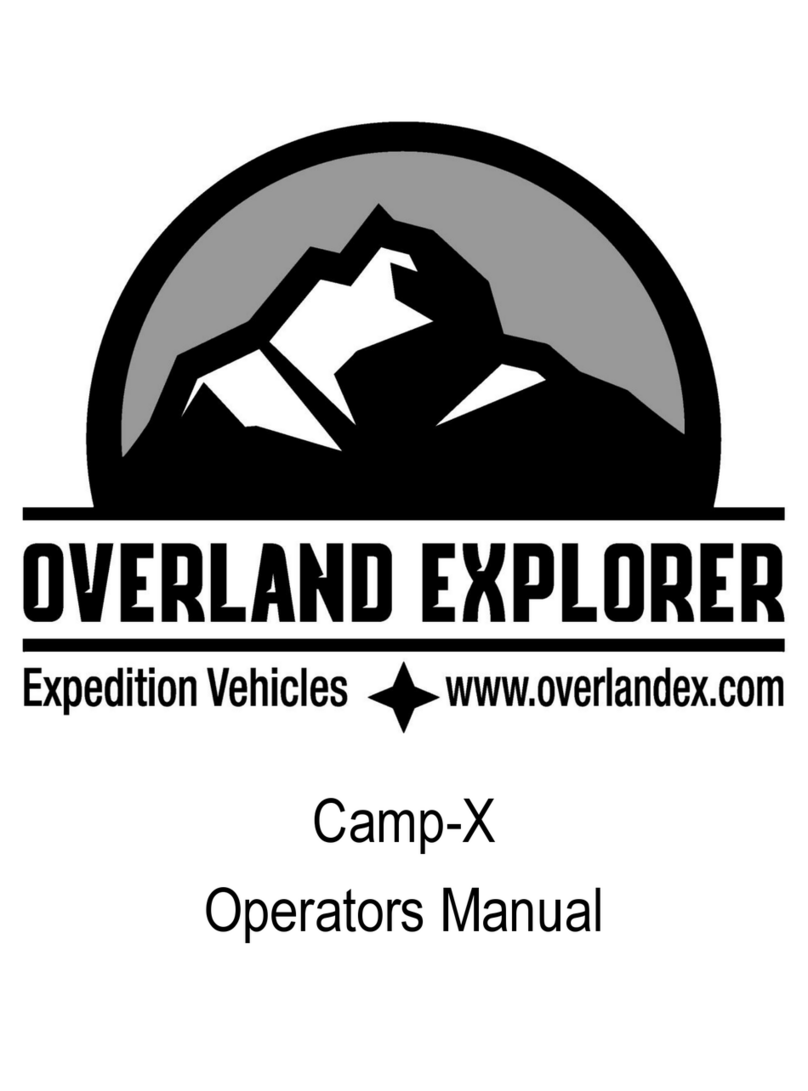Overland Explorer Expedition Vehicles
140-8319 Chiles Industrial Avenue, Red Deer, Alberta, Canada, T4P 1H2
403-346-9199
1: FEATURES
Your Camp M camper is constructed with materials and methods exceeding anything that is
available on the current market. There are 3 types of composites used in the construction of
your new camper, all selected for optimum performance in their respective applications. All of
our composites are proprietary, manufactured in USA and Canada to our specifications, and
assembled by Canadian craftsmen with years of experience. Truly a North American product.
The floor panel is laid up wet, gel coat, fiberglass, polyester resin, with a polypropylene
honeycomb core. This product has been designed and utilized for its brute strength, the
exterior of this panel is fiberglass with a poly coating for abrasion resistance, the interior has
enough fiberglass on it to support a lifetime of foot traffic and the abuse a floor can take. The
interior side of the floor has an automotive gel coat to seal the panel itself, it is then covered
with one-piece Lonseal marine flooring, a very tough, wear resistant flooring designed for harsh
environments. There is no wood in the floor, nothing to rot, nothing to fail.
The wall panels are another proprietary wet laid up product manufactured to our specs with a
unique skin design, and a foam core manufactured to our specification for a very good balance
between strength and insulation. Both sides of the wall panels are finished with an automotive
gel coat, maintenance for the walls is the same as any fiberglass product, minor scratches can
be polished out easily.
The roof panel is more of a conventional composite, a foam core with a bonded FRP skin. Our
skins are produced by Crane or Lamilux, with UV stability and thickness to our specification.
This roof is manufactured this way to keep the weight as low as possible, while retaining
structural integrity, and insulation value to match the rest of the unit. Care must be taken if
getting on the roof of the camper, minor denting of the roof surface can occur from knees and
other point loading, it is purely a cosmetic condition that can occur with no effect on structural
integrity.
This whole package is wrapped in proprietary aluminum extrusions designed to minimize
weight and maximize strength. By design the shell is watertight, the extrusions supply a second
complete seal for the shell, along with increased structural integrity, and damage resistance.
The roof extrusion set, upper and lower, is the workhorse of the roof and allows excellent
sealing when closed, supports the soft wall, anchors the hinges, supports and hides the lift
assist cylinders, and looks good doing it. All exterior extrusions are media blasted and powder
coated with an automotive/industrial quality polyester powder coat for corrosion resistance,
and durability.




























